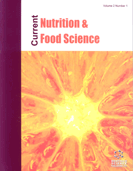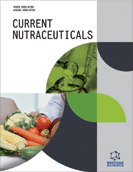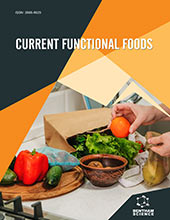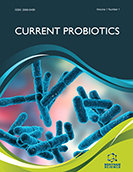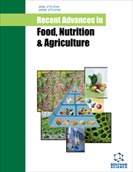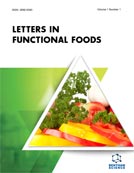Abstract
Background: It is now generally recognized that the high-calorie diets with inadequate physical activity result in many diseases such as obesity. In this work stevioside as an artificial sweetener and pectin as stabilizer were applied to prepare low-calorie quince jam.
Methods: In order to manufacture product with desirable properties, different factors such as percentage of pectin, stevioside and sugar was evaluated and optimized by response surface methodology (RSM). For determination ofoptimum points, two responses, viscosity and Brix were used. In the second part of this study, the effect of temperature (4 and 25°C) on physicochemical and sensory properties of the jam was measured every 20 days over 60-day storage.
Results: The optimized formula of reduced-calorie quince jam was obtained by pectin, stevioside and sugar content of 0.4, 0.27 and 50%, respectively. Storage time had a significant effect to decrease monomeric anthocyanins, total phenolic compounds, vitamin C and Brix significantly, whereas jam water activity and pH increased. On the contrary, storage temperature did not show any significant influence on physicochemical properties of jam.
Conclusion: Totally, the results showed that the production of low-calorie quince jam using stevioside can be industrially applicable and recommended to people who are interested in consumption of reduced- calorie foods.
Keywords: Anthocyanins, high-calorie, pectin, quince jam, temperature, viscosity.
Graphical Abstract
Current Nutrition & Food Science
Title:Physicochemical and Nutritional Stability of Optimized Low-calorie Quince (Cydonia oblonga) Jam Containing Stevioside During Storage
Volume: 14 Issue: 1
Author(s): Mojtaba Yousefi , Sayed Amir Hossein Goli*Mahdi Kadivar
Affiliation:
- Department of Food Science and Technology, College of Agriculture, Isfahan University of Technology, Isfahan 84156-83111,Iran
Keywords: Anthocyanins, high-calorie, pectin, quince jam, temperature, viscosity.
Abstract: Background: It is now generally recognized that the high-calorie diets with inadequate physical activity result in many diseases such as obesity. In this work stevioside as an artificial sweetener and pectin as stabilizer were applied to prepare low-calorie quince jam.
Methods: In order to manufacture product with desirable properties, different factors such as percentage of pectin, stevioside and sugar was evaluated and optimized by response surface methodology (RSM). For determination ofoptimum points, two responses, viscosity and Brix were used. In the second part of this study, the effect of temperature (4 and 25°C) on physicochemical and sensory properties of the jam was measured every 20 days over 60-day storage.
Results: The optimized formula of reduced-calorie quince jam was obtained by pectin, stevioside and sugar content of 0.4, 0.27 and 50%, respectively. Storage time had a significant effect to decrease monomeric anthocyanins, total phenolic compounds, vitamin C and Brix significantly, whereas jam water activity and pH increased. On the contrary, storage temperature did not show any significant influence on physicochemical properties of jam.
Conclusion: Totally, the results showed that the production of low-calorie quince jam using stevioside can be industrially applicable and recommended to people who are interested in consumption of reduced- calorie foods.
Export Options
About this article
Cite this article as:
Yousefi Mojtaba , Hossein Goli Amir Sayed *, Kadivar Mahdi , Physicochemical and Nutritional Stability of Optimized Low-calorie Quince (Cydonia oblonga) Jam Containing Stevioside During Storage, Current Nutrition & Food Science 2018; 14 (1) . https://dx.doi.org/10.2174/1573401313666170912164941
| DOI https://dx.doi.org/10.2174/1573401313666170912164941 |
Print ISSN 1573-4013 |
| Publisher Name Bentham Science Publisher |
Online ISSN 2212-3881 |
 35
35 4
4 1
1
- Author Guidelines
- Bentham Author Support Services (BASS)
- Graphical Abstracts
- Fabricating and Stating False Information
- Research Misconduct
- Post Publication Discussions and Corrections
- Publishing Ethics and Rectitude
- Increase Visibility of Your Article
- Archiving Policies
- Peer Review Workflow
- Order Your Article Before Print
- Promote Your Article
- Manuscript Transfer Facility
- Editorial Policies
- Allegations from Whistleblowers
- Announcements
Related Articles
-
Increased Serum HMGB-1, ICAM-1 and Metalloproteinase-9 Levels in Buerger’s Patients
Current Vascular Pharmacology Novel Validated RP-HPLC Method for Simultaneous Estimation of Valsartan & Gliclazide in Bulk and Dosage Forms
Current Pharmaceutical Analysis Mononuclear Phagocyte Accumulation in Visceral Tissue in HIV Encephalitis: Evidence for Increased Monocyte/Macrophage Trafficking and Altered Differentiation
Current HIV Research Fluoride Interactions: From Molecules to Disease
Current Signal Transduction Therapy Dimeric Approaches to Anti-Cancer Chemotherapeutics
Anti-Cancer Agents in Medicinal Chemistry Therapeutic Interventions to Renin-Angiotensin-Aldosterone System, and Vascular Redox State
Recent Patents on Cardiovascular Drug Discovery Sestrins: A New Kid for Stroke Treatment?
Current Drug Delivery Mitochondria-Targeted Antioxidants as a Therapeutic Strategy for Protecting Endothelium in Cardiovascular Diseases
Current Medicinal Chemistry Herbal Medicine for Slowing Aging and Aging-associated Conditions: Efficacy, Mechanisms and Safety
Current Vascular Pharmacology Oxytocin as a Potential Adjuvant Against COVID-19 Infection
Endocrine, Metabolic & Immune Disorders - Drug Targets A Review on the Toxicity and Non-Target Effects of Macrocyclic Lactones in Terrestrial and Aquatic Environments
Current Pharmaceutical Biotechnology The Potential of Stem Cell Therapy for Osteoarthritis and Rheumatoid Arthritis.
Current Stem Cell Research & Therapy High Sensitivity C-Reactive Protein (hsCRP): A New Biochemical Marker of Atherosclerotic Vascular Disease
Current Cardiology Reviews Immune-Mediated Mechanisms in Atherosclerosis: Prevention and Treatment of Clinical Manifestations
Current Pharmaceutical Design Melanocortin - 4 Receptor Agonists for the Treatment of Obesity
Current Topics in Medicinal Chemistry Stable Gastric Pentadecapeptide BPC 157: Novel Therapy in Gastrointestinal Tract
Current Pharmaceutical Design Oxidative Stress in Allergic and Inflammatory Skin Diseases
Current Drug Targets - Inflammation & Allergy Nanotechnologies: A Strategy to Overcome Blood-Brain Barrier
Current Drug Metabolism Architectures and Mechanical Properties of Drugs and Complexes of Surface-Active Compounds at Air-Water and Oil-Water Interfaces
Current Drug Discovery Technologies Comparison of Amniotic Fluid Index and Single Deepest Vertical Pocket
Current Women`s Health Reviews


